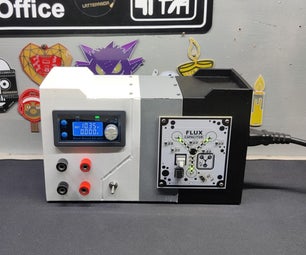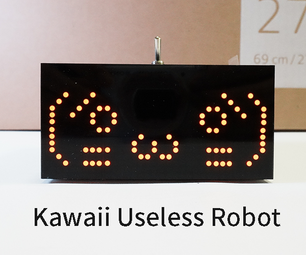Introduction: Portable Guitar Amp With Distortion / Bass Amplifier - 9v / LM386 IC
This is a really simple portable guitar amp project you can complete in an afternoon ; with the parts you need at hand. I used an old surround sound speaker as my enclosure, and used the speaker. The unit also has 5 tone settings to allow you to go from clean to gritty.
NOTE: if you are thinking about building one of these, see my newest addition first based on the 'Little Gem' amplifier, using a few more parts. It sounds much better.
https://www.instructables.com/id/The-Little-Gem-Mini-Amplifier-Guitar-Amp-/
NOTE: if you are thinking about building one of these, see my newest addition first based on the 'Little Gem' amplifier, using a few more parts. It sounds much better.
https://www.instructables.com/id/The-Little-Gem-Mini-Amplifier-Guitar-Amp-/
Step 1: Parts List / Wiring Diagram
The diagram below explains this build in detail. If you want 5-mode distortion, then you simply use the dip switch in place of the SPST switch on the 2.2uf-10uF capacitor. Remember that the speaker you use will make all of the difference in how clean your new portable guitar amp sounds. Mine sounds pretty clean, I achieve this by isolating jacks and components from each other, and I hot glue the audio lines and PCB wiring to avoid leakage.
Parts List:
Enclosure: I used an old surround sound speaker as my enclosure. You could make this unit into a box and use as a 'head' for speakers in mini-cabinets too.
9V Battery
9V Battery Clip
Input / Output Jacks 1/4 Mono
SPST Switch OR Dip Switch w/ 5 settings
PCB / Board material
LM386N IC
8 Pin IC socket (optional)
4.7uF Capacitor
10uF Capacitor
100uF Capacitor
470uF Capacitor
[optional - for multiple distortion modes]
0.01 capacitor
2.2 uF capacitor
00.47 capacitor
4.7uF capacitor
10uF capacitor
+ higher cap values = heavier distortion
Parts List:
Enclosure: I used an old surround sound speaker as my enclosure. You could make this unit into a box and use as a 'head' for speakers in mini-cabinets too.
9V Battery
9V Battery Clip
Input / Output Jacks 1/4 Mono
SPST Switch OR Dip Switch w/ 5 settings
PCB / Board material
LM386N IC
8 Pin IC socket (optional)
4.7uF Capacitor
10uF Capacitor
100uF Capacitor
470uF Capacitor
[optional - for multiple distortion modes]
0.01 capacitor
2.2 uF capacitor
00.47 capacitor
4.7uF capacitor
10uF capacitor
+ higher cap values = heavier distortion
Step 2: Putting It Together ...
This is a pretty simple PCB for making it all work - I think the power output is a 1/2 a watt. Follow my wiring diagram (photo 2) to put it all together.
Some notes:
I make a daughter board for my dip switch and extra capacitors for my multiple distortion modes.
I usually use shielded audio cable for the inputs and outputs to cut down on any feedback / buzz ; and a socket for the LM386 IC (not necessary) - just in case it gets toasted.
The LED for on/off is out the front [ use a 470ohm resistor between +9 and your on off switch ]
Battery location could be internal, but they get ate so I mounted mine externally. A 'Supercap' battery is another idea -- (DIY 9v rechargeable) or some other rechargeable battery as this device runs up to 15v.
Dip switch could be replaced with a 6-position selection switch / or other
Gain / Volume POTs could be added
Some notes:
I make a daughter board for my dip switch and extra capacitors for my multiple distortion modes.
I usually use shielded audio cable for the inputs and outputs to cut down on any feedback / buzz ; and a socket for the LM386 IC (not necessary) - just in case it gets toasted.
The LED for on/off is out the front [ use a 470ohm resistor between +9 and your on off switch ]
Battery location could be internal, but they get ate so I mounted mine externally. A 'Supercap' battery is another idea -- (DIY 9v rechargeable) or some other rechargeable battery as this device runs up to 15v.
Dip switch could be replaced with a 6-position selection switch / or other
Gain / Volume POTs could be added
Step 3: Finishing Up
You can build this into anything, but I decided an old surround sound speaker enclosure would work best (for being dropped, etc..).
I'll probably add these in the near future:
Volume / Tone Pots
A distortion unit clone on a foot switch (VOX tone bender clone)
Rechargeable Battery (of some kind) & built in charger / car charger
6-way tone selection switch
More stickers
A handle
PCB mounts
I'll probably add these in the near future:
Volume / Tone Pots
A distortion unit clone on a foot switch (VOX tone bender clone)
Rechargeable Battery (of some kind) & built in charger / car charger
6-way tone selection switch
More stickers
A handle
PCB mounts











